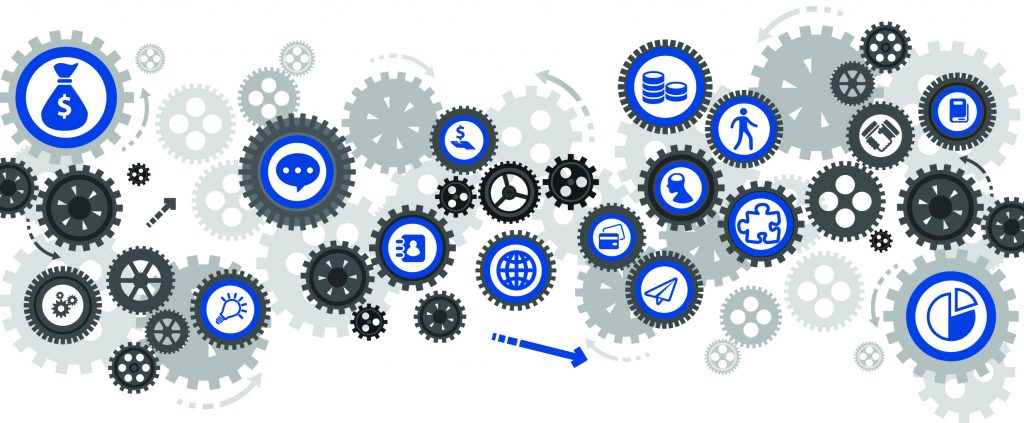 Nostradamus predicted: “mankind will see itself disappear into the void becoming one with the cosmic consciousness, a home for all souls and hearts on the great ball”. We’re just messing about. Nostradamus said nothing of the sort. But, he could’ve? In fact, if he had, it would have been true. The quatrain for social media would’ve been amazing. Fluffing aside, though, social media is indeed where the vast majority of people reside these days. That is where they spend a lot of their time. That is where they assemble and mingle. That is also where they speak out most, these days. If everyone is on social media in one form or another, why is your business not employing social listening?
Nostradamus predicted: “mankind will see itself disappear into the void becoming one with the cosmic consciousness, a home for all souls and hearts on the great ball”. We’re just messing about. Nostradamus said nothing of the sort. But, he could’ve? In fact, if he had, it would have been true. The quatrain for social media would’ve been amazing. Fluffing aside, though, social media is indeed where the vast majority of people reside these days. That is where they spend a lot of their time. That is where they assemble and mingle. That is also where they speak out most, these days. If everyone is on social media in one form or another, why is your business not employing social listening?
Why Create A Social Listening Process?
 After all, you could just go all out by hiring a millennial, buying a tool, creating a social listening strategy, and then having him spend time on it. Sounds about right, doesn’t it? It shouldn’t because it isn’t. There is a lot more to social listening than just putting your ears onto a glass attached to a wooden door. Consider it like this.
After all, you could just go all out by hiring a millennial, buying a tool, creating a social listening strategy, and then having him spend time on it. Sounds about right, doesn’t it? It shouldn’t because it isn’t. There is a lot more to social listening than just putting your ears onto a glass attached to a wooden door. Consider it like this.
The vast majority of the first world is on social media once in every few days if not every day. When on social media, what they do is put up content, whether it is in the form of likes and shares or comments. If everyone in the first world is doing that then there will be a lot of stuff that is not useful for your business. Everything will be “noise” as it is called in communication studies.
To sift through this noise and find the right intelligence, facts, or opinions requires a system or a replicable process. Otherwise, you’ll just be throwing money at the ocean, expecting to bait a whale of prehistoric proportions. You need to define a social listening process flow to ensure that your listening efforts are useful not only in terms of returns on your investment but also the usefulness of your findings. Let us describe what the simplest form of social listening process looks like.
Step 1: Social Listening Begins With Social Monitoring; Yes, They’re Different Things
 Social listening is a broad term that is often confused with social monitoring. This could be because of a certain lack of understanding of social listening but, more importantly, this probably occurs because social monitoring is a component of social listening. Social monitoring is possibly the most visible, and easiest to understand, component of the entire social listening process.
Social listening is a broad term that is often confused with social monitoring. This could be because of a certain lack of understanding of social listening but, more importantly, this probably occurs because social monitoring is a component of social listening. Social monitoring is possibly the most visible, and easiest to understand, component of the entire social listening process.
The objective of the social monitoring step of the social listening process is to gather data. The data you gather will be essential to various aspects of your business such as customer service, public relations, advertising, marketing, product development, and reputation management. What you’re focusing on will also change what type of data you gather.
However, one thing you must remember is that you need to find out more than just what people are saying about you, your products, or your industry. You need to actually find out what people are doing that may have a bearing on you, your products, or your industry. This is the secret of the social monitoring phase of the social listening process. When you only focus on the superficial and the obvious, you don’t get any information or intelligence that others don’t already have.
There are only two ways with which you can distinguish yourself from your competitors when it comes to social listening. One is to better utilise the intelligence you gather and the other is to gather better intelligence altogether. The second is why social monitoring needs to be paid attention to. Different metrics align with different goals and objectives. Therefore, the key to getting the right kind of data in the social monitoring phase is to focus on the right metrics.
Step 2: When You Listen, You Actually Eliminate Noise from the Signal
 The importance of social media cannot be ignored or neglected. The numbers are all in favour of businesses focusing on social media and trying to get their target audiences to engage with them. For example, studies from Nielsen have shown that 9 out of 10 people trust the brand if it is recommended by someone they know. Here’s the step before it. Nearly 80 percent of people say that when they start following a brand or business on Twitter, they also recommend it to their followers, per Chadwick Martin Bailey. Here’s the real clincher though. According to Hubspot, more than 70 percent of people buy things, once they get a recommendation from someone they know.
The importance of social media cannot be ignored or neglected. The numbers are all in favour of businesses focusing on social media and trying to get their target audiences to engage with them. For example, studies from Nielsen have shown that 9 out of 10 people trust the brand if it is recommended by someone they know. Here’s the step before it. Nearly 80 percent of people say that when they start following a brand or business on Twitter, they also recommend it to their followers, per Chadwick Martin Bailey. Here’s the real clincher though. According to Hubspot, more than 70 percent of people buy things, once they get a recommendation from someone they know.
How do you get followers and then get them to do these things, then? You talk their language. How do you know what language to talk? You do it by putting in place an effective social listening process. The second stage of your process should revolve around evaluating the data you’ve gathered to get rid of the chaff and home in on the kernel. This seems simpler than it actually is simply because of the quantum of data you’ll have to navigate through. However, this is precisely where your social listening analyst and marketing strategist will earn their keep. There’s a fortune to be made for businesses that can utilise social media properly.
Step 3: Listening Will Mean Nothing Without Actionable Intelligence
 The previous phase of the social listening process will result in key findings concerning various things. These could include anything from where your products lack from the perspective of your customers to what kind of brands they want to be associated with. However, knowing that your customers have certain tendencies and preferences means nothing unless you do something to translate that tendency to love for your brand, product, and business.
The previous phase of the social listening process will result in key findings concerning various things. These could include anything from where your products lack from the perspective of your customers to what kind of brands they want to be associated with. However, knowing that your customers have certain tendencies and preferences means nothing unless you do something to translate that tendency to love for your brand, product, and business.
Imagine that your social listening efforts yield the intelligence that your audience has a soft spot for charities and social causes. This intangible intelligence can be turned into an actionable advantage for your brand against your competitors. All you need to do is associate yourself with one or more charities and your audience will get even more enamoured with you. In the same vein, you can find improvements to your products, to your customer service, to your marketing campaigns, and anything else pertaining to your business.
Step 4: Actionable Intelligence Will Mean Nothing without Implementation
 By the third phase of your social listening process, you’ve figured out what you need to do to get more traction amongst your audience, to increase your sales, to improve your reputation, to boost your likeability etc. However, you still need to implement your findings and test their impact. So, this means that you associate yourself with a charity, make the information public knowledge, and then try to figure out whether it is having the desired effect.
By the third phase of your social listening process, you’ve figured out what you need to do to get more traction amongst your audience, to increase your sales, to improve your reputation, to boost your likeability etc. However, you still need to implement your findings and test their impact. So, this means that you associate yourself with a charity, make the information public knowledge, and then try to figure out whether it is having the desired effect.
This is the last and final phase of your social listening process i.e. implementation and testing of findings. The reason why this phase is important is that sometimes implementation needs to be handled a certain way for maximum result. For example, even if you get associated with a charity, you won’t get any response from your audience unless you take steps to highlight this fact in prominent places. This means releasing articles, blog posts, press releases, videos, and even advertisements to this end.
You need the new information to reach your audience and become associated with your brand to get the right results. You also need to maximise your investment, whether time or money, to get the best response from your audience.
Leave a Reply